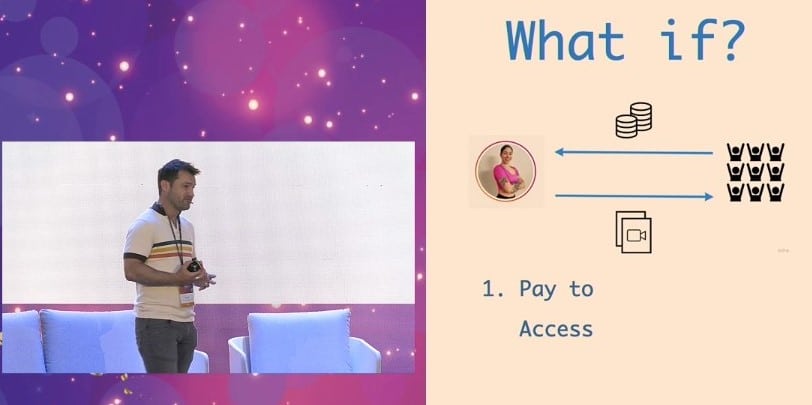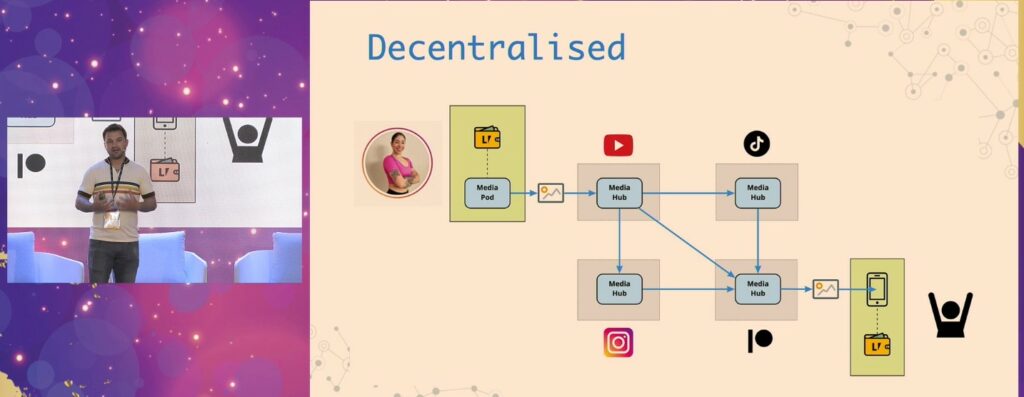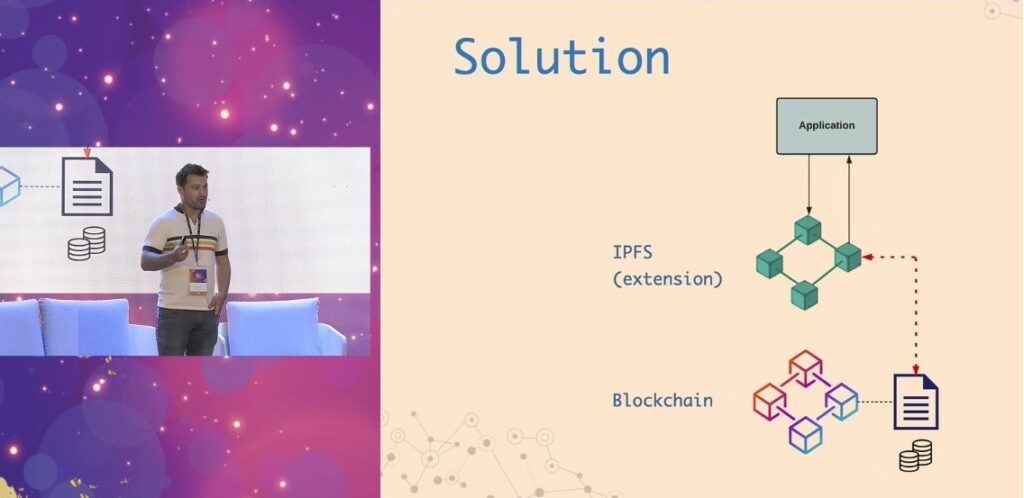
This entrepreneur shows you how to make money with your digital content in NFT
- Regulations
- May 15, 2022
Instagram Facebook Non-fungible tokens (NFTs) offer the opportunity to earn money in a decentralized way or without relying on centralized platforms such as YouTube, Instagram or Facebook. This was pointed out by Michael Smolenski, an entrepreneur from the world of blockchains, who today is CEO and founder of the Lightstreams network.
Smolenski presented himself today on the stage of the BlockDown event that this year is being held in Croatia. There he explained how users can actually own and control their digital content, turned into NFT.
To explain in detail how to achieve this, the software developer used an example of how an influencer like Kyra Pro, with a large number of followers on various social networks, such as Instagram and Tik Tok, you could make money by converting your contents into non-fungible tokens.
“Surely, the thousands of followers that Kyra has on Instagram would be bored if she offers them a series of collectibles in NFTs, but what would happen if instead she asks them to pay a modest sum of money to access certain content that would otherwise not be visible? What would happen if this influencer starts selling exclusive videos,” Smolenski wondered.
To understand what the entrepreneur and developer explained, we must first understand that social networks reward influencers when they accumulate a good number of views. In the case of Instagram, in November last year, it offered a $35,000 bonus to content creators who accumulated more than 58 million views in a month, according to a Business Insider post.

However, Smolenski’s proposal is that influencers like Kyra don’t have to rely on Instagram, nor of any centralized platform, but are capable of maintaining control of the digital content that is published on any type of social network.
The content in NFT and the limitations to overcome
As Smolenski commented, NFTs hosted on a public blockchain present problems because the digital content that has been linked is not really protected.
The limitation that needs to be overcome is the one that is in the smart contract of most NFTs today. There is a URL there that points to a digital content that is hosted on some server. But the problem is that that URL is public so, with a link, anyone can download the content that has that linked NFT, which means that no one has control over those NFTs.
Michael Smolenski, CEO of the Lightstreams network.
In addition to this, Smolensky spoke of another drawback that most of the NFTs that exist today have, as is how public and transparent some blockchains are in which they are hosted.
“If you want to exchange information via a smart contract on, for example, the Ethereum network, such an exchange is not only visible to any viewer, but it is also incredibly expensive to store anything exceeding a few kilobytes on the chain,” the developer said.
The problems raised by Smolenski have already been revealed in the ecosystem and have been reported by Criptonews. For example, there are the forgeries or plagiarism that they copy, the NTFS presented on a platform, as well as other difficulties, raised by the communities, where it has been manifested how much they affect the industry.

How to protect and monetize digital content in NFTs?
To solve some of the inconveniences that NFT creators must face today, Smolensky presented his startup, which apparently has found a possible solution.
This is the Lightstreams network, based on a new authorized block protocol that uses smart contracts to grant, block or revoke access to digital content in NFT, for specific users.
With this solution, an influencer like Kyra can publish her content in NFT and as the owner of that smart contract she will be able to grant access to all the users with whom she wants to share that content after they pay the indicated sum. But Kyra will also be able to sell the rights to that NFT for other users to publish them freely on various platforms.
Michael Smolenski, CEO of the Lightstreams network.

Another feature of Lightstreams described by Smolenski is that your system for NFT hosting has IPFS storage (Interplanetary file system or p2p storage) with improved permissions and with high hosting capacity for files of any size, as detailed.
With this we offer a system different from that of a public blockchain, whose data is transmitted to all the nodes of that network. On the contrary, with the extension of the ipfs protocol that we have integrated, when someone pays the required sum, they are granted access to be able to download the content linked to a certain NFT, but by doing so they will not have access to the data, so they are protected.
Michael Smolenski, CEO of the Lightstreams network.
With this proposal Smolensky believes that theNFTs now offer the opportunity to reinvent social networks and the entire industry based on content creation.
From his point of view, his concept would also reformulate the algorithms of social platforms, since they will no longer be based on the consumption of user data to start looking at the payments that users will make to have access to content.
